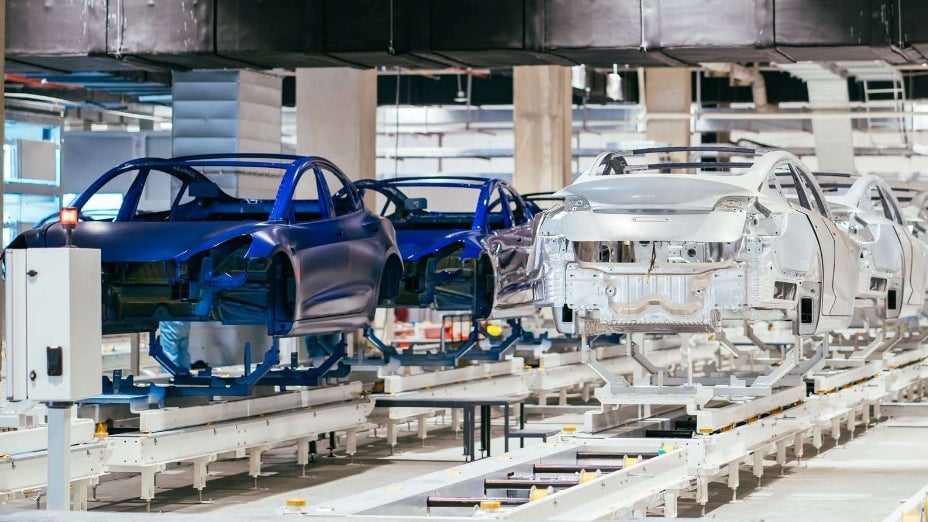Tesla’s producing its first made-in-China Model 3s
Things are humming along for Tesla. The company posted an unexpected profit in the third quarter and announced that its new Shanghai Gigafactory has begun manufacturing “trial” made-in-China Model 3s ahead of schedule.


Things are humming along for Tesla. The company posted an unexpected profit in the third quarter and announced that its new Shanghai Gigafactory has begun manufacturing “trial” made-in-China Model 3s ahead of schedule.
“We are already producing full vehicles on a trial basis, from body, to paint and to general assembly, at Gigafactory Shanghai. We have cleared initial milestones toward our manufacturing license and are working towards finalizing the license and meeting other governmental requirements before we begin ramping production and delivery of vehicles from Shanghai,” the company said (pdf, p. 7), adding that it expects China could be the biggest market for the Model 3. The starting price of the domestically made sedan is expected to be around $47,000, or 13% cheaper than the imported model.
Tesla’s goal is to produce 1,000 of the cheaper Model 3 sedans a week by the end of the year. “The Tesla China team has done an amazing job, I’m astounded how good the job is,” Musk said at an AI conference in Shanghai in August. “I think it’s a good story for the world, to say, look how much progress you can make in China… I’ve never seen anything so fast that before.”
The Model Y is also ahead of schedule, the company said.
China’s Ministry of Industry and Information Technology included Tesla on a list of approved automobile manufacturers (link in Chinese) it published Oct. 17.
The trial production comes as China plans to resume taxing imported American cars at 40% starting from Dec. 15 in response to the 10% tariff the US put on $300 billion of imported Chinese goods in September.
The California-based electric car maker broke ground in China in January, and has moved quickly amid an escalating US-China trade war that has taken its prices on a roller-coaster ride in its biggest overseas market.
Last year, when China raised the total tariff on US cars to 40%, Tesla was forced to raise prices by more than $20,000 on its top-end Model X. The EV maker saw its revenue in China in 2018 drop around 13% to around $1.8 billion from a year earlier. After talks between US president Donald Trump and Chinese president Xi Jinping last December, China reduced auto tariffs to 15%. But talks have been stop and go since then, and the two countries appear no closer to a concrete deal.
Investment bank Morgan Stanley expects Tesla to sell 35,000 to 40,000 Model 3s in 2020. In the longer term, Musk said he expects the demand for made-in-China Model 3s to reach 5,000 vehicles a week.
China has taken steps in recent years to open its car market—and Tesla has been a clear beneficiary, with its factory the first wholly-foreign owned one in China. For more than two decades, a foreign company needed to have a local partner if it wanted to manufacture cars in China. Last year, China’s top economic planner rolled back that rule, starting with electric cars.
Jane Li contributed to this article.
Looking for more in-depth coverage? Sign up to become a member and read more in-depth coverage of China’s electric-car boom in our field guide.